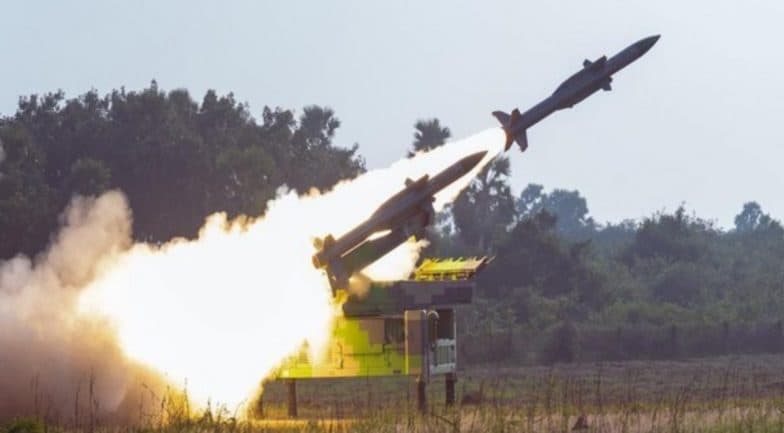SOURCE: AFI


In a significant development underscoring the growing defence ties between India and the Philippines, Philippine Army Chief General Romeo S. Brawner Jr. has expressed interest in exploring a broader range of military platforms from India. Speaking during a visit to New Delhi, Gen. Brawner highlighted the potential for procuring missile systems, fighter aircraft, and warships, in addition to the ongoing acquisition of Indian-made equipment like the BrahMos supersonic cruise missile.
The Philippines and India have steadily expanded their defence cooperation in recent years, driven by shared concerns over maritime security and regional stability in the Indo-Pacific. The cornerstone of this partnership has been the Philippines’ $375 million deal in 2022 to acquire three batteries of the BrahMos missile system, co-developed by India and Russia, for its Marine Corps’ coastal defence role. The first battery is slated for delivery by December 2025, with the Philippine Army also planning to procure two additional batteries, bringing the total to five across both services. This acquisition marks a historic milestone as the Philippines became the first export customer for the Mach 3-capable missile, which boasts a range of 290 kilometers.
Gen. Brawner’s remarks in New Delhi suggest that this is just the beginning. “Philippines can look into procuring more platforms, missile systems, maybe fighter aircraft and warships from India,” he stated, signaling an intent to expand beyond missile systems to include air and naval assets. His comments come as the Philippines accelerates its Armed Forces Modernization Program under Horizon 3 (2023-2027), a multi-billion-dollar effort to shift from internal security to territorial defence, particularly in response to tensions with China in the South China Sea.
India’s burgeoning defence industry offers a range of platforms that could align with the Philippines’ modernization goals:
- Missile Systems: Beyond BrahMos, India could pitch systems like the Akash air defence missile, which Gen. Brawner referenced during his visit. With a range of 25-30 kilometers, the Akash could bolster the Philippines’ air defence capabilities, complementing its planned acquisition of US-made HIMARS rocket systems. Posts on X have noted Manila’s interest in additional BrahMos units, with negotiations reportedly in an advanced stage for the Army.
- Fighter Aircraft: India’s Tejas Light Combat Aircraft (LCA), developed by Hindustan Aeronautics Limited (HAL), could be a contender for the Philippine Air Force’s multi-role fighter requirement. The Tejas, a single-engine jet with a combat radius of over 500 kilometers, offers a cost-effective alternative to Western options like the Saab Gripen or Lockheed Martin F-16, which Manila has also evaluated. While still establishing its export credentials, the Tejas aligns with India’s push to become a global arms supplier.
- Warships: Indian shipyards like Mazagon Dock and Garden Reach Shipbuilders could offer frigates, corvettes, or offshore patrol vessels (OPVs). The Philippines, currently procuring warships from South Korea (e.g., Jose Rizal-class frigates), might find India’s offerings—like the Nilgiri-class frigates or Kamorta-class corvettes—appealing for their affordability and customization potential. The Indian Navy’s stealth-capable INS Sahyadri, which visited Manila in 2019, previously showcased India’s naval technology to Philippine officials.
Gen. Brawner’s overture comes amid heightened tensions with China, which he bluntly called “a bully” during his Delhi visit, according to posts on X. China’s expansive claims in the South China Sea, coupled with incidents of harassment against Philippine vessels, have pushed Manila to bolster its deterrence capabilities. The BrahMos, with its supersonic speed and precision, already provides a credible counter to Chinese naval assets, but additional platforms could further tilt the balance.
India, too, has strategic stakes in this partnership. As a rising power in the Indo-Pacific, New Delhi seeks to counter China’s influence while expanding its defence export market. The Philippines’ interest aligns with India’s “Act East” policy and its efforts to position itself as a reliable alternative to traditional suppliers like the US, Russia, and European nations. Posts on X highlight Filipino envoy Josel Ignacio’s 2024 statement that India is seen as a “main source” for AFP modernization, reflecting mutual enthusiasm.
NOTE: AFI is a proud outsourced content creator partner of IDRW.ORG. All content created by AFI is the sole property of AFI and is protected by copyright. AFI takes copyright infringement seriously and will pursue all legal options available to protect its content.